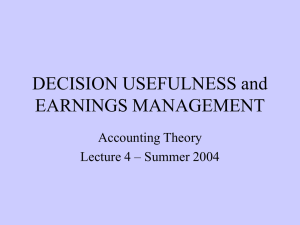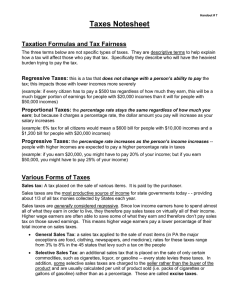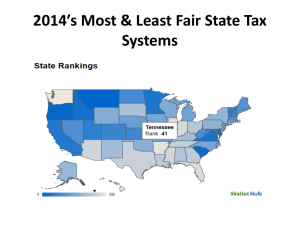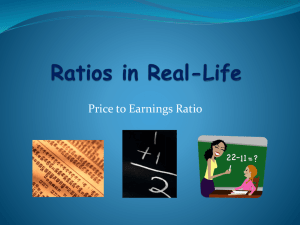a progressive tax.
advertisement
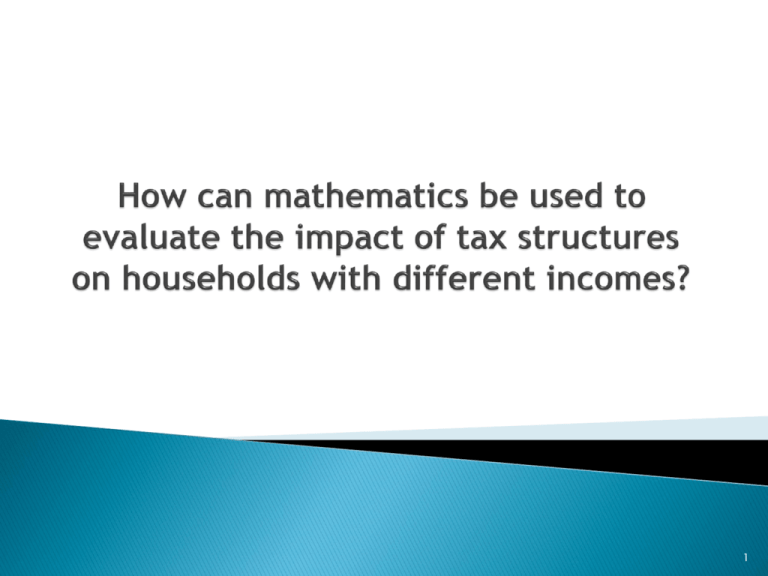
1 Total Taxes Paid Total Earnings Before Taxes 2 Did you think the average tax would increase, decrease or stay the same? What do the data show us? 3 m = .066 m = .10 m = .12 m = .133 m = .143 Total Taxes Paid Total Earnings Before Taxes 4 There are 2 parts ◦ 1 line has a domain from 0 to 10 ◦ The other domain is x is greater than 10 Total Taxes Paid y=0 Total Earnings Before Taxes So the 2 equations are: y = 0 from 0 to 10 And y = .2(x-10) when x is greater than 10 y = .2(x-10) 5 This tax has a special name… a progressive tax. A progressive tax is a tax that takes a larger percentage of income from people in higherincome groups than from people in lower-income ones. The U.S. personal income tax is an example. 6 Yes. This tax is called a regressive tax. A regressive tax is a tax that takes a larger percentage of income from households in lowerincome groups than from higher-income ones. Sales taxes on gasoline or groceries. Ex: $2000 = .20 $2000 = .02 $10,000 $100,000 7 Here is our graph representing a progressive tax structure from earlier. Notice the extension of the line has a negative yintercept. Total Taxes Paid What would a graph of a regressive tax structure look like? The y-intercept is now a positive number. Total Taxes Paid Total Earnings Before Taxes Total Earnings Before Taxes 8 We get a different tax structure. This is called a proportional tax. A proportional tax takes the same percentage of income from people in all income groups. Total Taxes Paid Total Earnings Before Taxes 9








